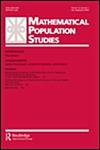自我形象与他人形象语义差异量表的线性、对称与等距
IF 1.3
3区 社会学
Q3 DEMOGRAPHY
引用次数: 0
摘要
语义差异量表中尺度点的线性、对称和等距的违反可能是由于受访者未能找出反义词、积极偏见或受访者减少了他们的阅读选项。通过对537名德国居民的网络调查,对随机受试者间实验(分裂投票)提供的数据进行多重对应分析表明,双极性语义差异量表允许线性测量并且不隐藏积极偏差,并且在语义差异量表中使用不合适的形容词对破坏了对称性。本文章由计算机程序翻译,如有差异,请以英文原文为准。
Linearity, symmetry, and equidistance in semantic differential scales for measuring images of self and images of others
ABSTRACT Violations of linearity, symmetry, and equidistance of scale points in semantic differential scales may be due to respondents failing to figure out antonyms, to a positivity bias, or to respondents curtailing their reading the options. Multiple correspondence analysis on data provided by a randomized between-subjects experiment (split-ballot), using a web survey of 537 German residents, shows that bipolar semantic differential scales allow for linear measurement and conceal no positivity bias, and that using not suitable adjective pairs in semantic differential scales destroys symmetry.
求助全文
通过发布文献求助,成功后即可免费获取论文全文。
去求助
来源期刊

Mathematical Population Studies
数学-数学跨学科应用
CiteScore
3.20
自引率
11.10%
发文量
7
审稿时长
>12 weeks
期刊介绍:
Mathematical Population Studies publishes carefully selected research papers in the mathematical and statistical study of populations. The journal is strongly interdisciplinary and invites contributions by mathematicians, demographers, (bio)statisticians, sociologists, economists, biologists, epidemiologists, actuaries, geographers, and others who are interested in the mathematical formulation of population-related questions.
The scope covers both theoretical and empirical work. Manuscripts should be sent to Manuscript central for review. The editor-in-chief has final say on the suitability for publication.
 求助内容:
求助内容: 应助结果提醒方式:
应助结果提醒方式:


